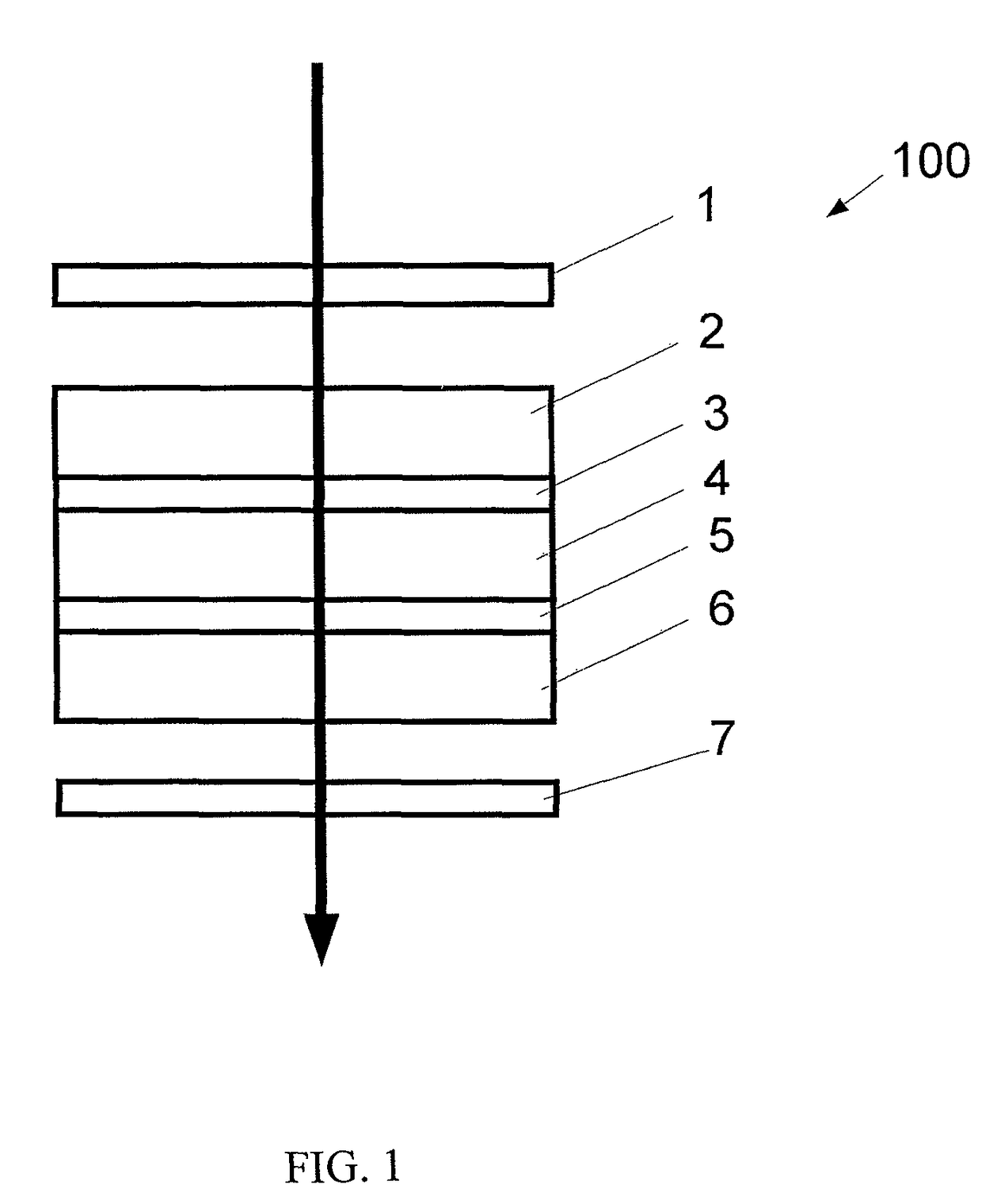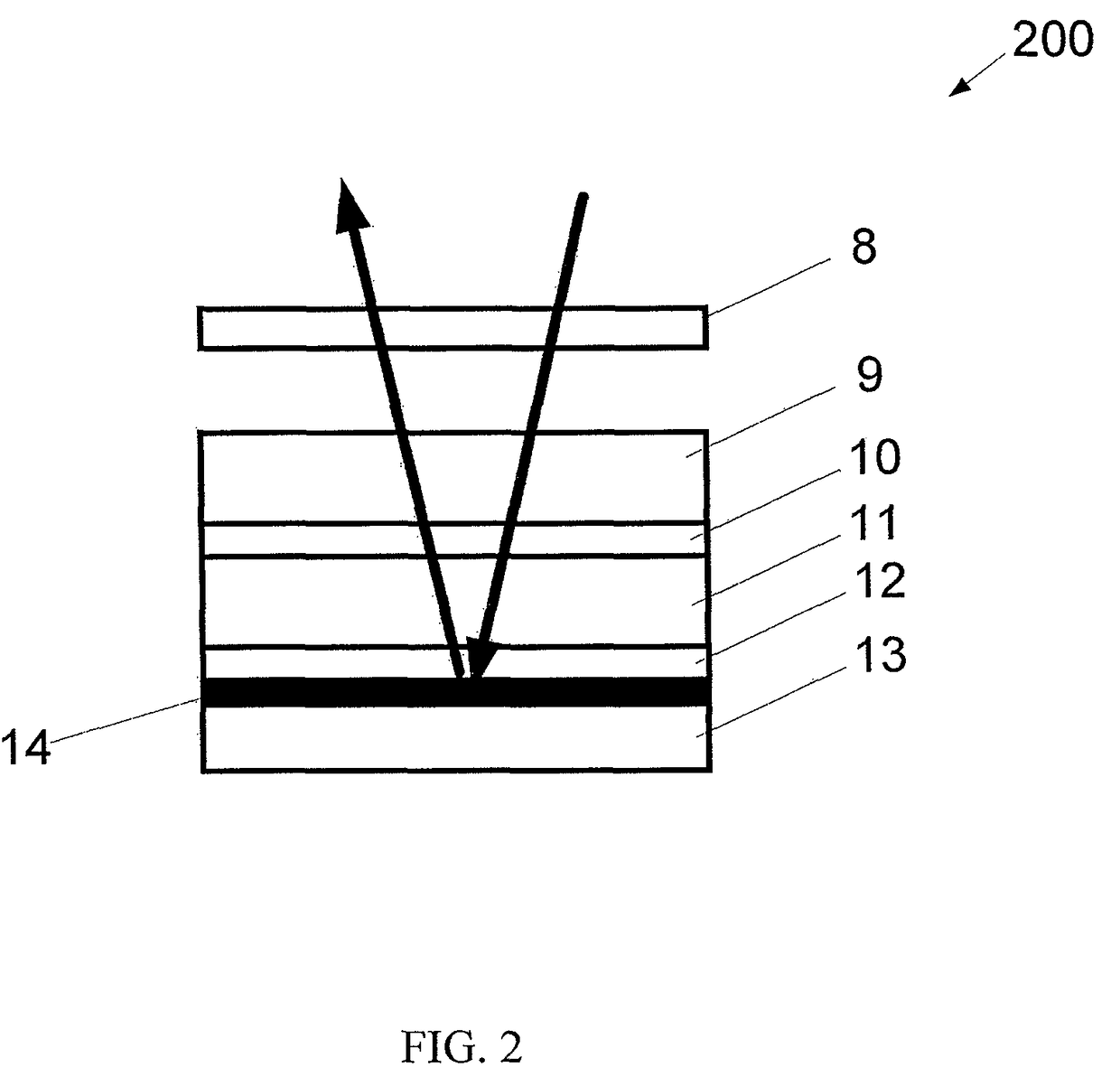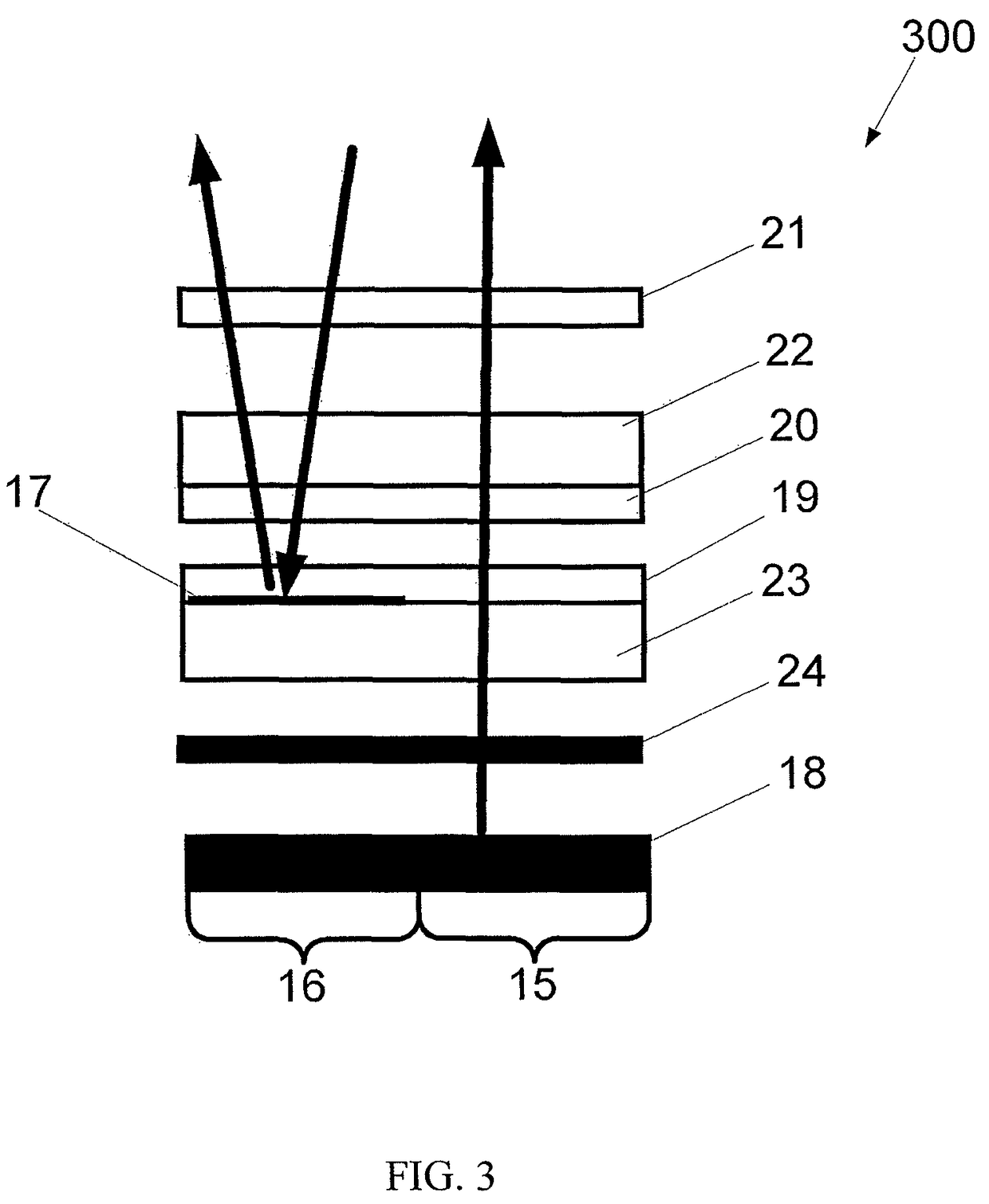Transflective liquid crystal display
a liquid crystal display and transparent technology, applied in non-linear optics, instruments, optics, etc., can solve the problems of difficult manufacturing and more expensive double cell gap designs, and achieve the effects of easy manufacturing, easy and economical manufacturing, and easy manufacturing
- Summary
- Abstract
- Description
- Claims
- Application Information
AI Technical Summary
Benefits of technology
Problems solved by technology
Method used
Image
Examples
Embodiment Construction
[0020]Referring now to the drawings, FIG. 1 shows a traditional liquid crystal (LC) cell structure 100. The LC cell consists primarily of (1) the glass substrates 2 and 6, with alignment layers 3 and 5 associated with them, and (2) the LC layer 4. In addition, front and rear polarizers 1 and 7 are needed to manifest the polarization manipulation of the LC cell and show bright or dark states of the display. Other structures such as the active matrix thin film transistors and spacers, retardation films etc are not shown here for the sake of clarity, but may also be used if desired or needed for a particular application or implementation.
[0021]The optical properties of the LC display 100 are defined by a twist angle and a retardation dΔn of the LC layer 4. Here d is the cell gap and Δn is the birefringence of the LC material. The alignment layers 3 and 5 determine the twist angle as well as the pretilt angle of the LC layer. Transparent conductive electrodes (not shown in FIG. 1) are e...
PUM
| Property | Measurement | Unit |
|---|---|---|
| angle | aaaaa | aaaaa |
| angle | aaaaa | aaaaa |
| angle | aaaaa | aaaaa |
Abstract
Description
Claims
Application Information
 Login to View More
Login to View More - R&D
- Intellectual Property
- Life Sciences
- Materials
- Tech Scout
- Unparalleled Data Quality
- Higher Quality Content
- 60% Fewer Hallucinations
Browse by: Latest US Patents, China's latest patents, Technical Efficacy Thesaurus, Application Domain, Technology Topic, Popular Technical Reports.
© 2025 PatSnap. All rights reserved.Legal|Privacy policy|Modern Slavery Act Transparency Statement|Sitemap|About US| Contact US: help@patsnap.com



